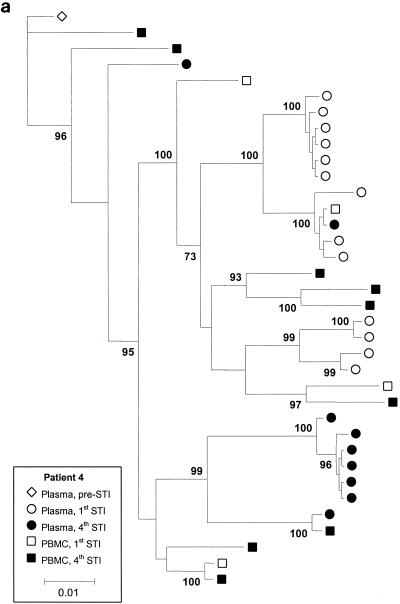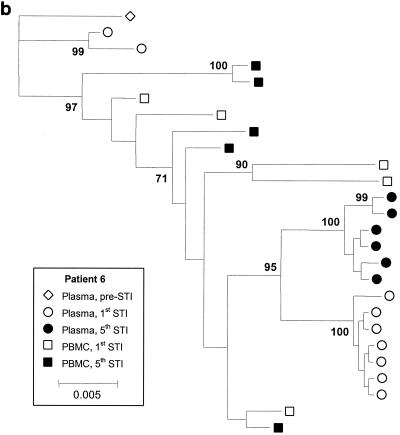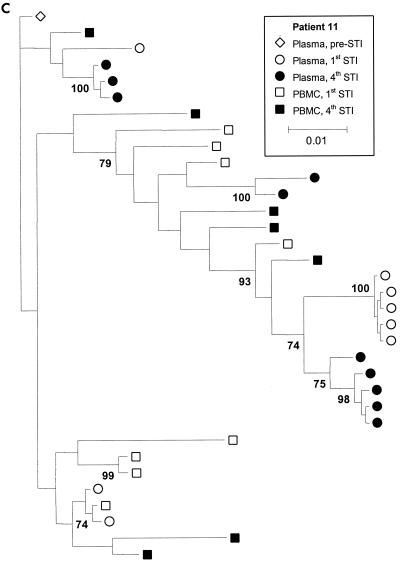FIG. 3.
Majority rule consensus trees for patients 4 (a), 6 (b), and 11 (c). Numbers at the nodes represent the percentages of support for the clusters. For patient 6, virus samples from the fifth STI were studied because the levels of the virus in plasma did not rebound during the fourth STI. Parameter values are as follows. A Hasegawa-Kishino-Yano (HKY) model of nucleotide substitution was assumed, with a uniform prior distribution and a range 3 to 6 assumed for the transition-transversion parameter. Base frequencies were fixed at their empirical estimates. The rate of heterogeneity was modeled as a mixture of invariant sites, at frequency p, with the substitution rates of the remaining sites following a discrete gamma distribution with shape parameter α. A Dirichlet distribution with parameter 1 (corresponding to a vague distribution) was assumed for p, and a uniform distribution (range, 0.05 to 0.5) was assumed for α.



